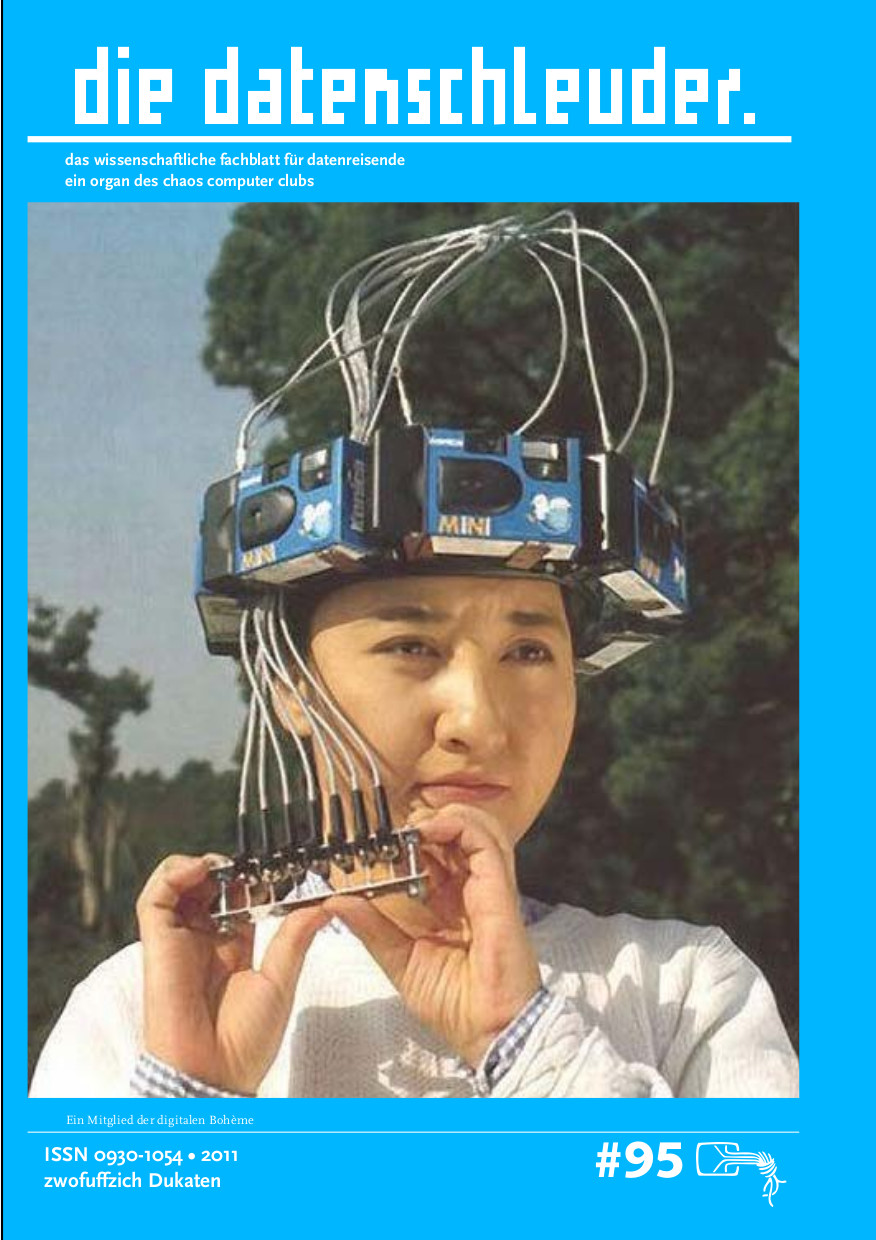Die Datenschleuder: Das wissenschaftliche Fachblatt für Datenreisende, 1-96 (1984-2011) [German]
Filed under magazine | Tags: · cctv, cryptography, data, digital human rights, freedom of information, hacker culture, hacking, privacy, technology

“Die Datenschleuder. Das wissenschaftliche Fachblatt für Datenreisende, literally translated as The Data Slingshot: The scientific trade journal for data voyagers, is a German hacker magazine that is released in irregular intervals by the Chaos Computer Club (CCC).
Topics include political and technical aspects of the digital world such as freedom of information, data privacy (data protection), closed-circuit television, personal privacy (personal rights), cryptography and many more.
Die Datenschleuder was first published in 1984 and also can be subscribed to independent of a membership in the CCC. Back issues are freely available on the Internet as well. The current print paper format is DIN A5 as per ISO 216. Its editorial office is carried on virtually over the Internet, while the magazine itself is printed in and distributed from Berlin.” (Wikipedia)
Edited by 46halbe, starbug and erdgeist
Publisher Chaos Computer Club e.V., Hamburg
ISSN 0930-1054
PDFs/HTML
PDFs/HTML
Internet Archive
Matt Curtin: Brute Force: Cracking the Data Encryption Standard (2005)
Filed under book | Tags: · computing, cryptography, cypherpunk, hacking, mathematics, security, technology

In the 1960s, it became increasingly clear that more and more information was going to be stored on computers, not on pieces of paper. With these changes in technology and the ways it was used came a need to protect both the systems and the information. For the next ten years, encryption systems of varying strengths were developed, but none proved to be rigorous enough. In 1973, the NBS put out an open call for a new, stronger encryption system that would become the new federal standard. Several years later, IBM responded with a system called Lucifer that came to simply be known as DES (data encryption standard).
The strength of an encryption system is best measured by the attacks it is able to withstand, and because DES was the federal standard, many tried to test its limits. (It should also be noted that a number of cryptographers and computer scientists told the NSA that DES was not nearly strong enough and would be easily hacked.) Rogue hackers, usually out to steal as much information as possible, tried to break DES. A number of “white hat” hackers also tested the system and reported on their successes. Still others attacked DES because they believed it had outlived its effectiveness and was becoming increasingly vulnerable. The sum total of these efforts to use all of the possible keys to break DES over time made for a brute force attack.
In 1996, the supposedly uncrackable DES was broken. In this captivating and intriguing book, Matt Curtin charts DES’s rise and fall and chronicles the efforts of those who were determined to master it.
Publisher Springer, 2005
Copernicus Series
ISBN 0387201092, 9780387201092
291 pages
wikipedia
publisher
google books
Cypherpunks mailing list archive (1992-1998)
Filed under mailing list | Tags: · anarchism, capitalism, code, computing, cryptography, cypherpunk, free software, mathematics, politics, privacy, reputation, security, software
Cypherpunks was an active list with technical discussion ranging over mathematics, cryptography, and computer science. It had extensive discussions of the public policy issues related to cryptography and on the politics and philosophy of concepts such as anonymity, pseudonyms, reputation, and privacy.
The list was started in 1992, and at its peak in 1997 had well over a thousand subscribers, including John Gilmore (EFF co-founder), Timothy May (author of Crypto Anarchist Manifesto), Eric Hughes (A Cypherpunk’s Manifesto), Phil Zimmermann (PGP), Hal Finney (RPOW), Bram Cohen (BitTorrent), Adam Back (Hashcash), Julian Assange (WikiLeaks), John Young (Cryptome), or Rop Gonggrijp (Xs4all).
ZIP (from Cryptome.org)
Comment (0)
